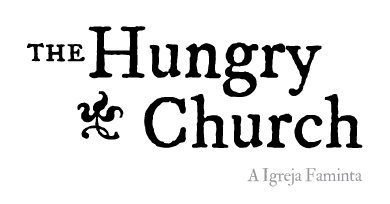
Model Animation
Dún Laoghaire Institute of Art, Design and Technology
Dún Laoghaire, Ireland
Initial Sketches
Theme: Victorian Gothic Horror
Selected elements of Gothic Literature:
(1) The clergy as an evil institution.
(2) The setting as a character.
(1) The clergy as an evil institution.
(2) The setting as a character.
Automaton Concept: The Hungry Church
The main character of the automaton is the church, and not the humans pictured. As corpses, they represent the nefarious food of an evil monstruous church.
The initial sketches here depicted were drawn from memory, without references, to achieve the idea of a stereotypical church, rather than a realistic gothic render, since the final project would be too small to have too many details.
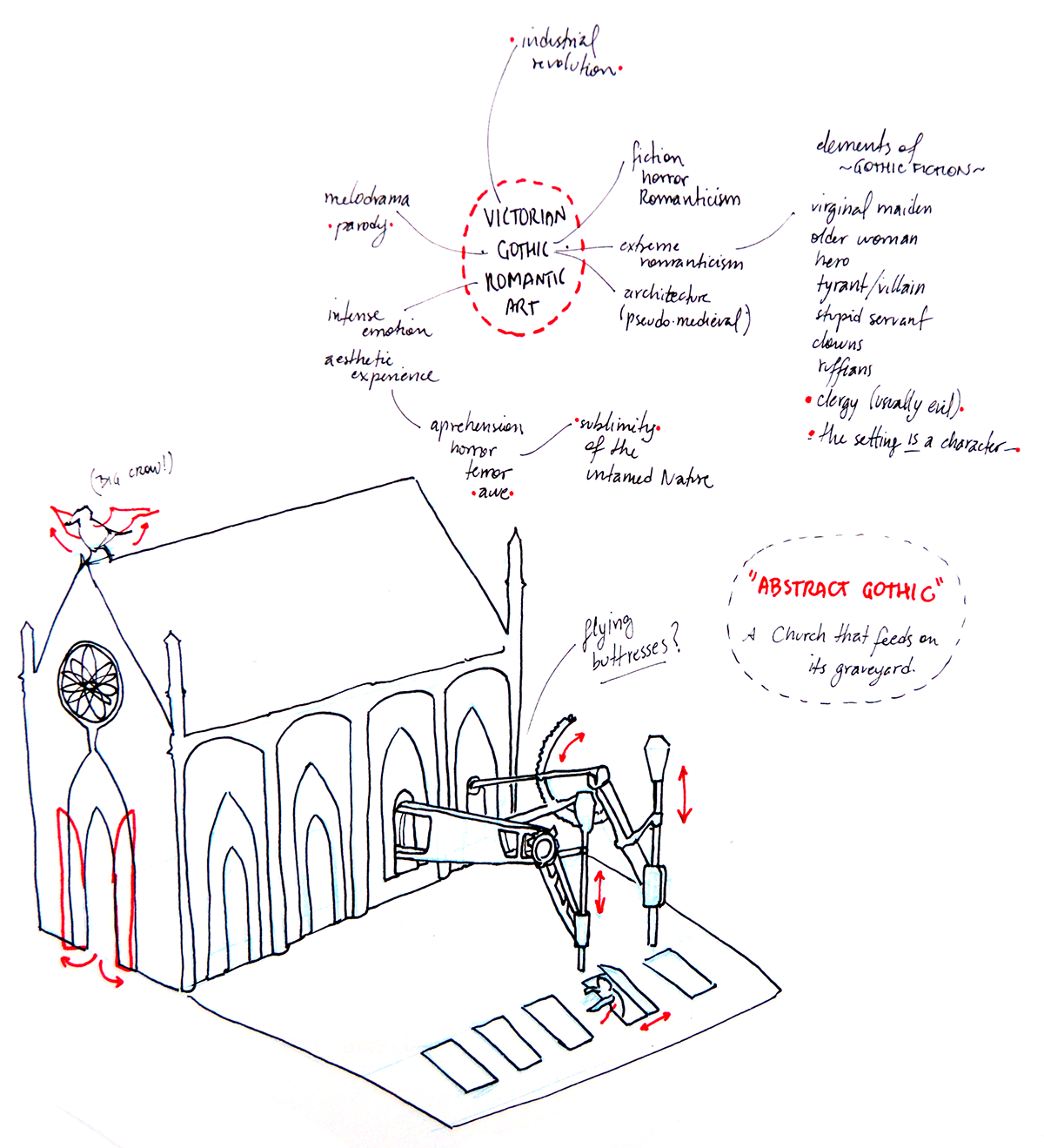

The Guideline
After the main design was decided, this picture was considered the final rendering of the project, depicting the architecture and the mechanical elements: (1) the crow flapping its wings, (2) the rose window spinning, (3) the arms grabbing the corpses and (4) the conveyor belts rushing with the bodies towards the inner workings
of the monstrous church.
of the monstrous church.
Due to spatial reasons (and time), the crow was removed from the final mechanism.
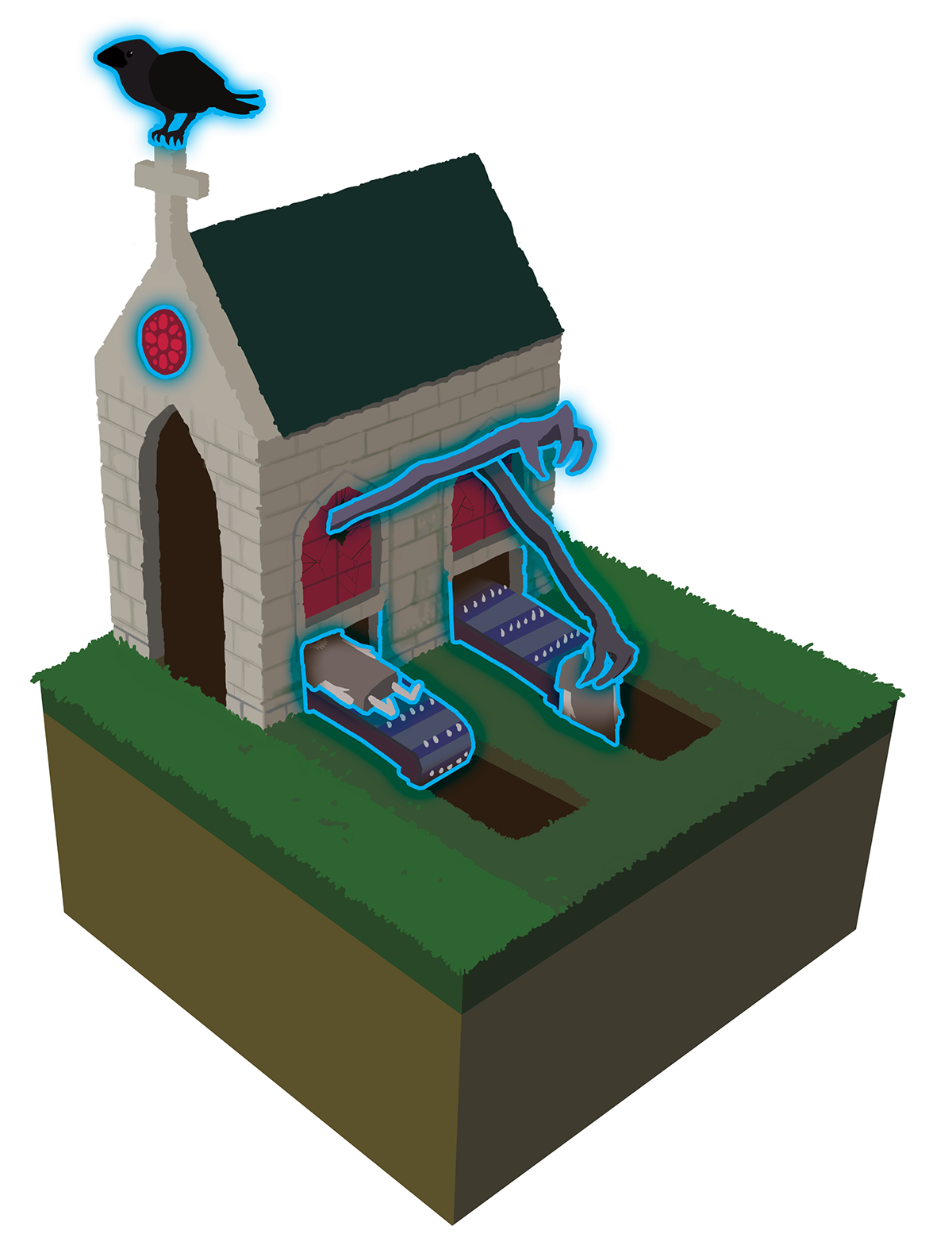


The Final Mechanism
This next picture still haves the crow mechanism (the first big circle from top to bottom), that was excluded. All the other elements are still present in the final version of the project. The yellow bars represent the arms lenght, that would be finally calculated only when all the pieces were assembled, since the hands would be sculpted in organic shapes.
Another deviation from the final design is that the main shaft (red circle on bottom left) is now just above the ground level, while the conveyor belts dowel (red circle on bottom right) is now just below ground level, giving the belts a slightly more dramatic slope.

The Wood Cuts
The main structure is made of birch plywood, 6mm thick boards. The organic parts (corpses and hands) are carved in balsa wood.
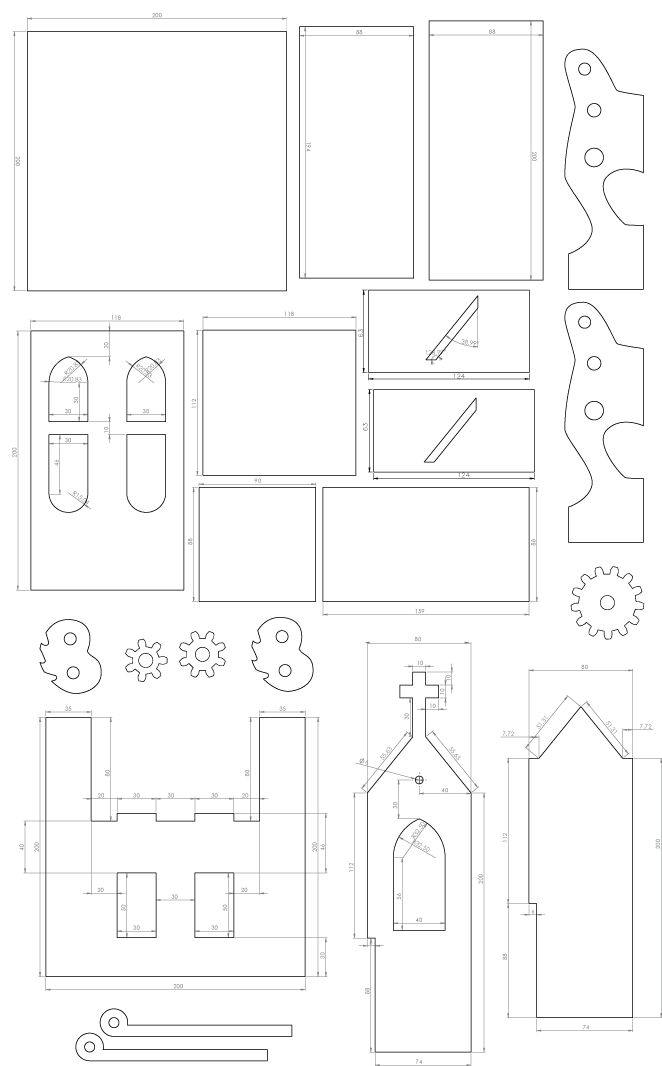




Painting
The entire model, conveyor belts and figures received a coat of gesso before the final paint, in acrylics.




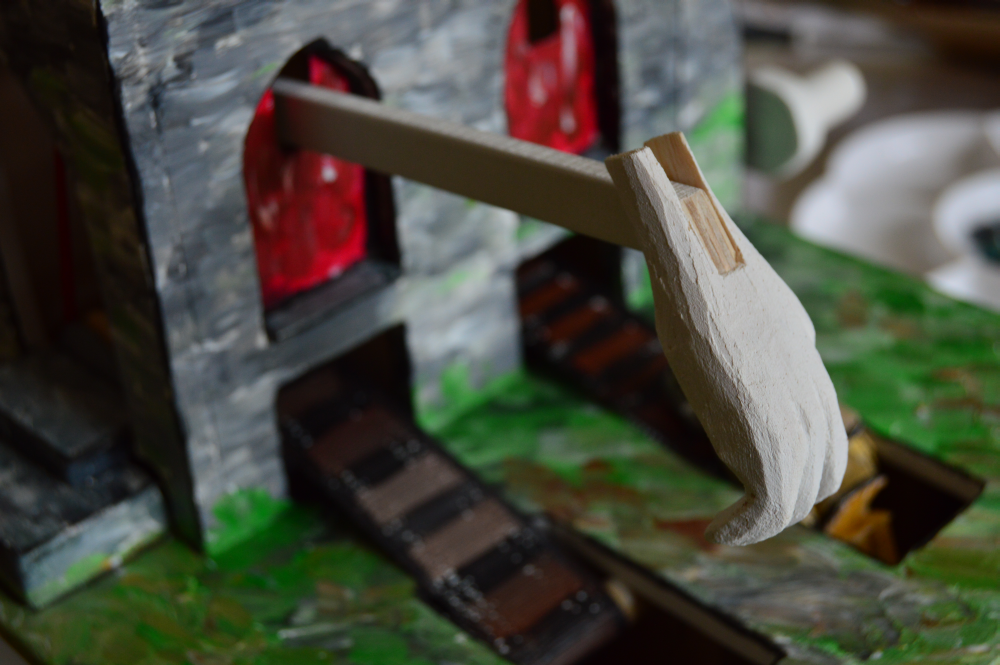


Seeing the mechanics
The architecture of the model is made in a way that the observer can see the mechanics working inside. This is a feature that came from a bug - the mechanism that moves the arms is too big to fit inside the box, so the back wall was adapted so it can move freely outside.

Hello, Vincent
Vincent van Gogh’s style is not, in any way, related to the victorian gothic romance that we are used to. However, the project final design was so geometrical and straight-shaped that the main character - the Church - was a bit too generic. Vincent van Gogh depicted landscapes and architecture in a very organic, oneiric way, apart from anything that resembles straight lines. Trying to paint the church as Vincent is a homage to him, as well as an atempt to breathe (evil) life in square cuts of wood.



Monstrous Animation
The final design of the automaton is a dreadful cycle: turning the handle clockwise, the main shaft pulls the conveyor belts towards inside with the bodies, at the same time driving cogs that makes the rose window spin and the arms extend, reach outside in a circular movement and then push the corpses upwards.





